#balkan folk
Explore tagged Tumblr posts
Text

Redraw of an old idea I had, the gaang if they were Bulgarian/South Slavic.
Aang is inspired by shepherd's clothing mostly as well as some North- and Central- West Bulgarian clothing. Same for Sokka, but mostly CW (from the Shop region). Katara is a mix of Rhodope mountain and again CW styles. The butterflies are just so they don't stare in empty space lol
#avatar the last airbender#atla#fanart#avatar: the last airbender#a:tla#aang#katara#sokka#bulgarian folk#folk clothing#folk costume#traditional dress#balkan folk#slavic folk#avatar
196 notes
·
View notes
Text
▪️"Straight from the traditions of Pirot, Southeast Serbia, this mesmerizing dance brings history to life. 🌿✨🇷🇸
▪️ Dressed in authentic Pirot attire, every step reflects the rich heritage and artistry of this timeless culture. A journey through rhythm, pride, and tradition. 🎼🕊️"
#serbian#balkan#europe#serbian beauty#serbian traditional clothes#serbian folklor#slavic#serbian women#serbian tradition#serbian culture#Serbian dance#serbian traditional dance#Traditional dance#balkan folk#pirot#Southeast Serbia#Folk dance#Serbian folk dance
44 notes
·
View notes
Text

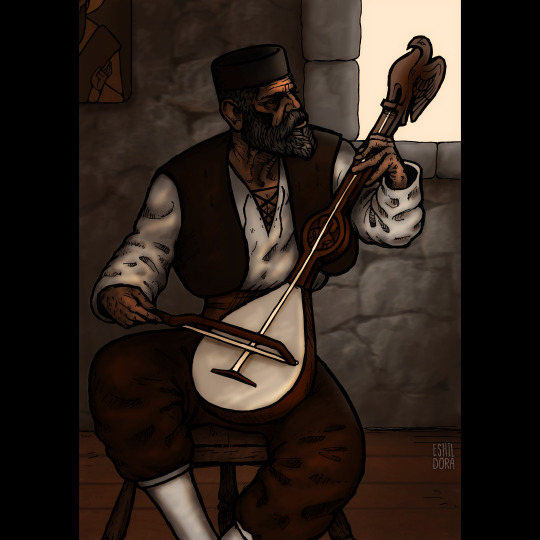
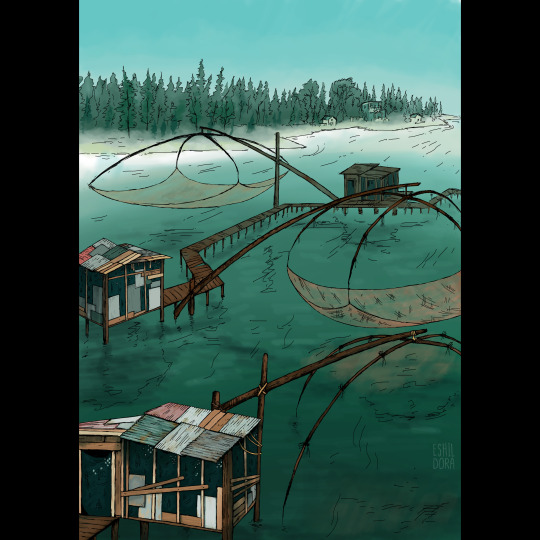
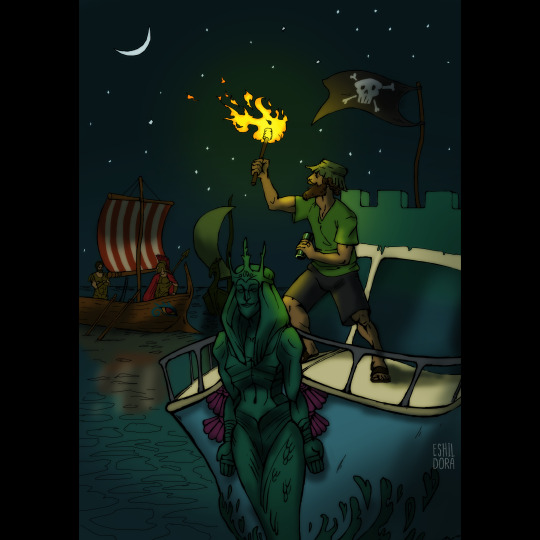
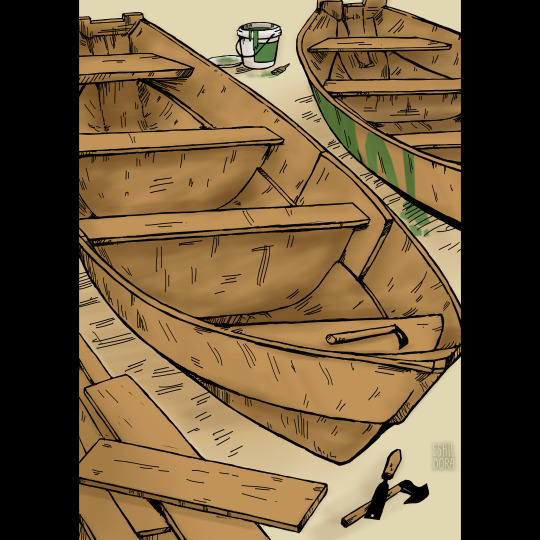
Some of the many comissioned illustrations for my hometown's museum!
#eshildora#digital art#art#illustration#digital illustration#digital painting#character design#character art#digital artist#slavic folk dress#folklore#folk music#gusle#montenegro#montenegrin#crna gora#anthropology#childrens illustration#boka bay#balkan folk#balkan artist
20 notes
·
View notes
Text
Ako nekad prošlost te zaboli, Ti prošetaj po našim stazama Još po njima crvene su ruže, Zalivene mojim suzama



If at any point the past brings you pain, Go and walk on our paths. Only there are roses red, Watered by my tears.
#semsa suljakovic#red roses#song#spotify song#songs#sad songs#bosnia#bosnian#bosnian songs#songs on repeat#aesthetic#red aesthetic#dark aesthetic#aestethic#not mine#dark edit#heart#old aesthetic#Spotify#wlw post#lesbian#wlw blog#lesbianism#wlw community#wlw#wlw love#real love#lesbian love#lesbians are beautiful#balkan folk
1 note
·
View note
Text
Redi Hasa & Maria Mazzotta - Ura
Albania / Italy, 2014, Balkan folk / Italian folk

View On WordPress
0 notes
Text

I’m so happy, 5 new records for my collection 🥹 I love both Beirut and Miho Nakayama so much 🫶
1 note
·
View note
Text












AeternaNova Northern Macedonian ethnographic project
"AeternaNova" (in Latin "aeterna"- ancient and "nova"-new) is an exhibition of photographs, folk costumes, and an ethnographic film, curated by Filip Petkovski Ph.D., UNESCO-certified heritage expert. It aims to represent the cultural heritage of Macedonians, Albanians, Turks, Roma, and Vlachs living in North Macedonia, and to feature recorded personal narratives of the models on the photos who are leaders in their professions (actors, musicians, athletes, public figures), about their views and experiences with diversity and inclusion.
The project incorporates new media, ethnography, and visual anthropology to contextualise the topic, while each photograph serves as a visual narrative aimed to illustrate the dynamic evolution of cultural identity in the region. We are led by the idea that cultural heritage must be reinterpreted and modernised to be largely disseminated, especially amongst the younger population, who might mystify and reject the topic of cultural heritage. The exhibition will take place at the Youth Cultural Centre in Skopje, while the results of the project will be published as a research paper in the journal "Macedonian Folklore" in which we will explore diversity, inclusion, and peaceful coexistence.
The project aims to emphasise the similarities in the cultures of all of the communities that live in North Macedonia and encourages the audience to engage in a process of mutual learning and enrichment of knowledge related to cultural heritage."
#folklore#ethnographic#slavic#folk costumes#slav#macedonian#macedonia#northern macedonia#vlach#albanian#turkic#yoruk#roma#macedonians#northern macedonians#balkan
449 notes
·
View notes
Text
Slovenian (right) and Serbian (left) Miku from Bela Krajina region (White Carniola) 🇸🇮 or dare I say, Belokranjska Miku
(My Part in the Miku trend on Twitter)

EDIT: Since I've seen some confusion about this; Bela Krajina is a region in Slovenia with a distinct culture and clothing style. The majority of the population are ethnically Slovene (here represented by the Miku on the right, "Slovenian Miku"), however there is a minority ethnic Serb population (also sometimes referred to as Orthodox Uskoki) who have lived in Bela Krajina since the 16th century and who have their own distinct folk clothing style (here represented by the Miku on the left, "Serbian Miku"). I wanted to include both of them because I find the cultural diversity of Bela Krajina really fascinating (and based on my experience, people in Bela Krajina are really proud of their diversity too!) and because the Serb minority in Bela Krajina is really small nowadays and often forgotten.
#art#folk dress#balkan#balkans#digital art#hatsune miku#hatsunemiku#miku fanart#vocaloid miku#vocaloid#slovenian#slovenia#slovene#Serbian#serb#south slavic#slavs
503 notes
·
View notes
Text

finding my roots
#art#balkans#balkan#hills#photography#mountain#mountains#ruralcore#trees#sticks#roots#leaves#goth#gothic#goth aesthetic#croatian gothic#folk goth#whimsigoth#rural#hood#black dress#white#black#romanian#romania#croatia#croatian folk#croatian#georgia#georgian
236 notes
·
View notes
Text

#American Folk Music#Television Music#Ragtime#Indie Folk#Balkan Brass Band#Balkan Folk Music#2010s#2020s#USA#poll#Spotify
149 notes
·
View notes
Text
Laying the foundation ~House spirits 1~
Choosing to build a home, temple, or business somewhere takes thought and consideration. World wide people have devised practices around this, spiritual and otherwise. In some cases part of building practices might account for the learning, appeasing, clearing, and/or working with spirits that may already reside there.
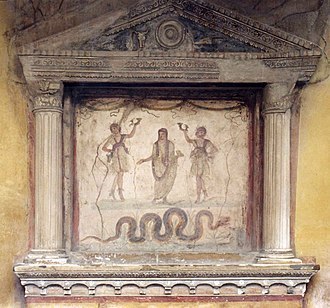
Finding where to settle:
The Balkan region has many names for place -bound spirits (stiia, stihio, stuha, stoikeion) which could be understand as forgotten dead, fiery snakes, or house spirits. In Russian and Ukrainian lore there is the domovoy (domovoyk, domovoi) a house spirit associated with ancestral spirits, and the house addar/snake who resides behind the stove and brings blessings. There's the Greek Lares, the UK's brownies, and the German kobolds and dracs. Throughout Europe people have been naming these land spirits as well as practices for dealing with them.
Lots of thought was put into finding places to build a home, consideration was especially given to the dead or spirits already occupying a space. Making sure not to build where the dead are laid, and sometimes asking guidance or permissions from ancestors. Ukrainian mountaineers taught this, as well as to never build houses at crossroads or places pathways crossed, or build atop the old ruins of a heating stove (as this means there is already a spirit occupying this place). There was also an avoidance of building on a plot of a land with lots of tree stumps, with a focus on if the stumps were red after being cut, suggesting they were bleeding.
Certain spaces remained untouched and left sacred to spirits. Certain groves, mountains, or rivers were set aside to the spirits of the gods of these places. Special groves where a tall oak grew, rivers where spirits are said to bathe, or caves in the sides of mountains where trolls or dwarves were said to live. These places remain unbuilt on for a while out of respect for the beings already occupying them. Priests moving through the area encountered forests so sacred in rural Lithuania that you could not enter or touch certain woods with iron (tools for cutting). If someone did the penalty was death. The fear of place spirits was very present.
Some good omens to build in the Baltic region are where you find black ant hills, where a cow has loved to lay, and where the future house-owner dreams of a domestic animal. A new moon was also a good omen for construction. Romans would often favor the side of roads for building homes, as money and people flowed through here. Places away from others such as the edged of fields were avoided due to being away from the hum of life. The Romans also avoided building at crossroads or over cemeteries.
A few ways were utilized to find a spot to build. Sometimes the materials used in the building were used to divine a location, such as the case with the church of Siuxt (Kirkland, Russia) where a rock placed to begin building rolled down a hill in the night, so they continued building where the stone landed. The stone had been placed close to another property, and it seems the spirit already residing there didn't want company. Other times an animal would be allowed to wander until exhaustion an a building was built there, or a log was tossed into a river and where it stopped they built. Sometimes the throwing of logs or floor boards into water from a prior home was done in honor of a pagan god, letting their new home be decided by the divine.
When spirits occupied a place:
Sometimes a place is already occupied by spirits, so people have devised ways of laying claim to these spaces. This has been done similarly to using a piece of wood of from an old home, except with a coffin in the case of Kveldulf heading to Iceland. He was dying and asked that his coffin be tossed into the sea to show his son where to build there home. This was a way for his spirit in death to claim and become and rooted ancestor there for his future descendants. Other times a large staff/stick is driven into the ground and the land is declared to be where a son will build their home.
Fire was also a common element for claiming land from spirits, as it's solar properties was believed to drive away chthonic land spirits. In folklore it turns dwavres to stone, and stopped elven islands from sinking underwater. Norwegian king Harald Fairhair helped codified rites called "eldvigning" or "consecrations by fire", but there is reason to believe it predates him. In one example a fire is kindled and spread from sunrise to sunset, and the land in which the individual encircles with fire becomes theirs. A flaming arrow was another option, being shot over the land that is being claimed.
Circumambulation was also a common tactic and oldest forms for laying claim to space. As the act of encircling something is both protective (creating a barrier) and a declaration of sacredness of what is being protected inside. This holiness could be due to the presence of a god, saint or holy relic, spirit or dead relative. Circumambulation was combined with the use of fire and bells to excise claimed land and remove any unwanted spirits. Moving in a circle making noise to tare down protections can also be seen in the bible's story of Joshua, where the Israelite move in a circle around Jericho to tare down it's walls. Similar methods were used by witches in North Berwick England where they walked counter clockwise around a church to unlock it's door and preform their devlish rites in a once holy place.
In Thailand we see similar elements emerge. When a house-builder wishes to build a home he will approach an expert who is an architect, builder, and ritual specialist who is usually a former monk. This expert will decided when to begin building on an auspicious day (between harvest and the next first ploughing). The ritual expert is also responsible preforming various exorcisms of the materials and land, as well as for taking into account the nagas (serpent spirits who reside underground) so the posts being put into the earth can be laid parallel to them prior. Gunpowder is burned and the poles are washed with water to frighten away evil spirits.
House spirits in these contexts were called "sao phaya" to refer to the spirit of a single household, and "cao thi" for the spirit of a small community or ancestral shrine. Other names such as "phi" (which to my understanding means "ghost") also appear.
Beginning construction:
Now that you've made claim to the place you want to build it's time to begin the work of construction. Which often takes consideration of the land spirits and giving scarifies to them so they won't stand in the way of construction. These rituals scarifies and acts being understood as a type of contract with the spirits occupying this place. Throughout history the types of scarifies have changed. Going from young humans, to goats, oxen, dogs, and roosters. These bodies being found below building or inside the walls of homes, churches, and monasteries. These animals eventually replacing humans. Interestingly, these same animals used as sacrifices were also the common forms utilized by these guardian land spirits. Snakes were common forms too, and were believed to be a good omen to find a snake living in the walls of your home. Ancestors were also used as masks by these beings, which relates back to the burying of people or our dead below the home.
Specific trees or stones were also used as the place of these sacrifices. Forming a compact with the surrounding spirits, who revive them in place of the spirits of home. Scarifies in these cases could take the form of leftover food or gruel. These stones and trees were to be left undisturbed, or ill fortunes could befall the family.
The Carpathians used to lay loaves of bread and salt under the four corners of their future homes, as this was supposed to bring wealth. Bread and salt being important parts of inviting a domovoyk into a new dwelling. Again a pact is presented to the spirit, food and substance in return for blessings.
Other rituals in Polissia involve the holding of a feast when the foundation of a building is laid. During this feast guests were expected to not step on the doorstep of the new home, as this was sacred place for the spirit who protects the house which had to brought over. Another held superposition was not to whistle during this period of construction, as this could scare off the spirits here.
Other foundational rites in the Balkans include giving an offering to the future spirit that will live here through the foundation stone when it's laid. If a sacrificial animal is used it becomes the form of the guarding spirit of this home. On occasion someone sick or near death was used for this purpose. In some cases a person's shadow was measured with cotton, and that length of cotton was included in the foundation or walls of the home as a sacrifice. Believing that the individual who's shadow was measured would die soon.
Once the foundation is laid and the posts are set the rest of the building is swiftly put up and filled. From this moment on families will work to keep their house spirits happy thorough the observance of taboos and rituals. To keep good fortune and life flowing into the home.
Summary:
-Land that is already occupied by a spirit is hard to build on.
-Certain omens can signify good land for building.
-When a spirit does occupy a space there are ways of laying claim. Such as through fire, circumambulation, or pacting with them.
-Sacrifice and death helps establish a connection with a place.
-Spirits of the dead and place emerge through characteristics of the house spirit
Sources:
Demons and Spirits of the Land, by Claude Lecouteux
The tradition of household spirits, by Claude Lecouteux
Pagans in the Early Modern Baltic, Edited and translated from Latin by Francis Young
Architectural and political space in Thailand, by Andrew Turton
Stoikheion, stuha, zduhac: Guarding spirits, weather magicians and talisman magic on the Balkans, by Eva Pocs
#witchcraft#occult#folk magic#spirit work#folk lore#house spirits#pagan#paganism#witchblr#trad craft#traditional withcraft#history#witch#ukraine#balkan#folk history#land spirits#familiars#familiar spirit#tradcraft#original content#ramblings of a madman#my stuff
35 notes
·
View notes
Text
the Montenegro national anthem is so good that if you look it up on youtube 100% of the comments are just people checking in from all over the world to say how good it is and wishing Montenegro the best. and they're right. it's the best national anthem on the planet and probably always will be
#this is just my opinion i just think its the best one#i wish america had a good national anthem#you can hear the minor key harmonic folk singing straight from the ancient Balkan peasants#its just sublime!!!#i love D Minor#montenegro
53 notes
·
View notes
Text
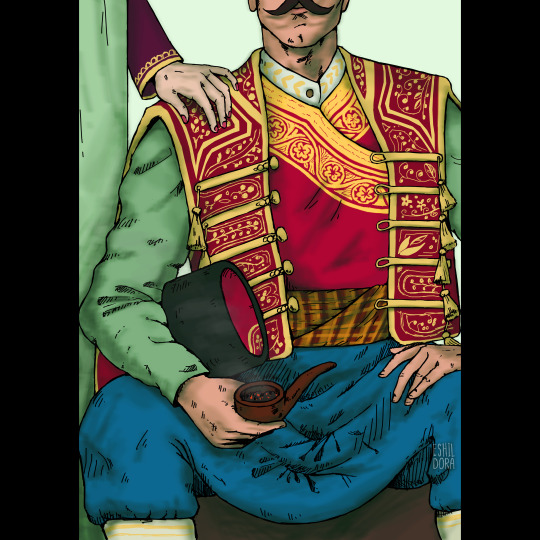
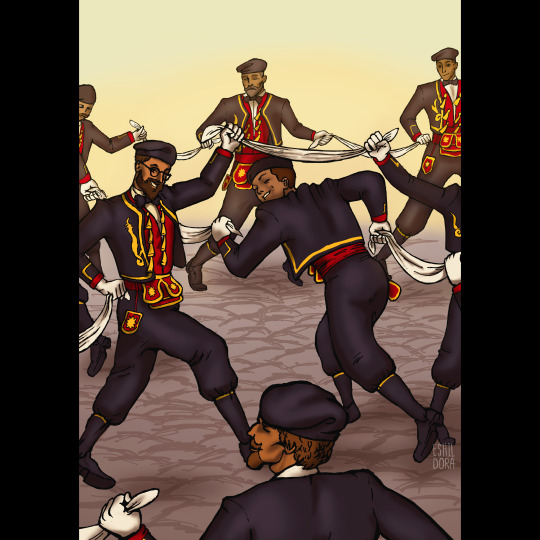
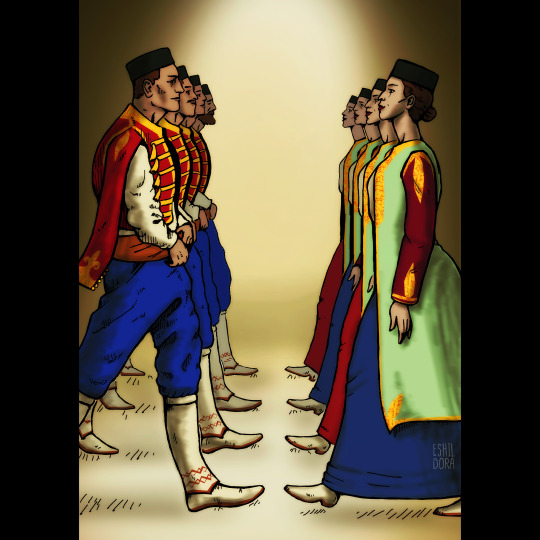


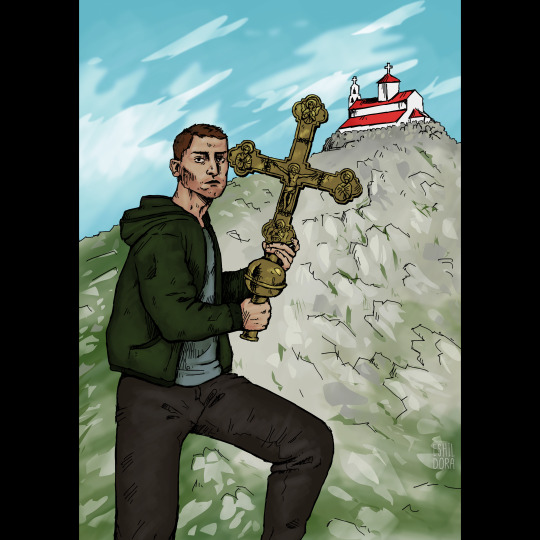
More of these works I've done for the museum. They were done in 2022 and 2023 but I delayed posting them because I thought they were maybe hard to understand for foreigners. After all they do require lots of context but so as not to spam you all I'm open to answer questions, do enjoy the art regardless!
#eshildora#digital art#art#illustration#digital illustration#digital painting#character design#character art#digital artist#balkan artist#balkan folk#montenegro#montenegrin#crna gora#folk#folklore#folk music#slavic folk dress#slavic art#slavic culture#folk art#folk dance
18 notes
·
View notes
Photo
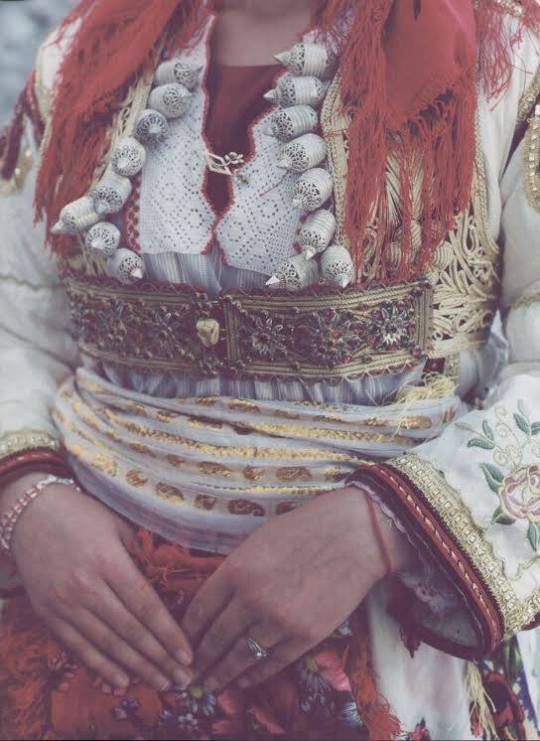
Detail of an Albanian traditional costume from Shestan.
#albanian#albania#region: shestan#shqiptar#Montenegro#balkan#balkans#costume#folk#folklore#traditional clothing
570 notes
·
View notes
Text
🌺Serbian Beauty in Traditional Clothes from Mačva region 🌺

▪️A Serbian girl dressed in the beautiful traditional clothes from Mačva. 🇷🇸✨ A true reflection of Serbian culture and heritage. 🌸💚
▪️Mačva is a region in western Serbia, known for its rich history, traditions, and culture. Famous for its fertile land, the area’s customs and folklore are deeply rooted in daily life. Mačva is also renowned for its beautiful traditional clothes that reflect the soul of this region.
#serbian#balkan#europe#serbian beauty#serbian traditional clothes#serbian folklor#serbian women#slavic#serbian tradition#serbian culture#Mačva#Serbian folk#Folklor#Beautiful traditional woman
36 notes
·
View notes
Text
‘7000 tears’






#semsa suljakovic#dark aesthetic#goth#goth aesthetic#bosnian#bosnian folk#dark edit#aesthetic#not mine#darkness#make up#gothic#gothcore#photo collage#spotify song#spotify#song#lyric posting#gothgoth#alt aesthetic#alternative girl#sad music#i love semsa#i love her#i love this somg#bosnia#balkan#serbia#alternative#lesbian
27 notes
·
View notes